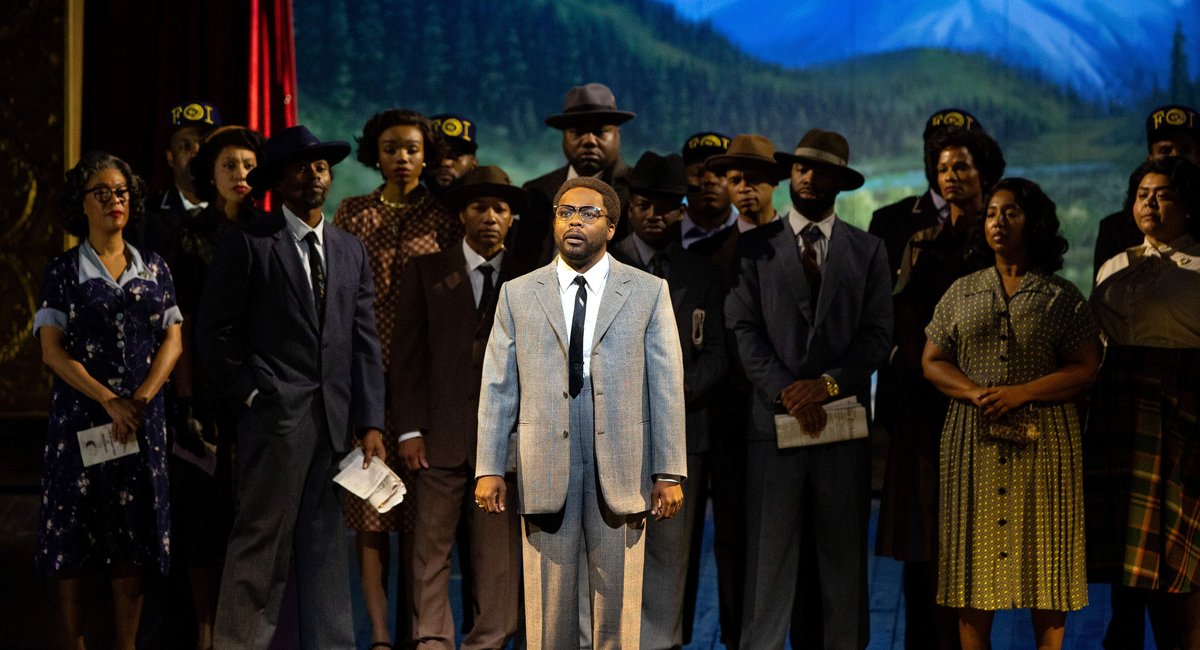There’s an unexpected, futuristic twist in the revival of the Anthony Davis opera “X: The Life and Times of Malcolm X,” the original of which was first staged nearly four decades ago: A spaceship hovers over the stage throughout the entire production, and names familiar and perhaps unfamiliar scroll along the contours of the vessel.
The Met Opera work, which opened last week at Lincoln Center, traces the life of the Black civil rights leader, from his childhood in Michigan to his final moments, when he was gunned down at age 39 in Audubon Ballroom, Washington Heights. Opening night was a glamorous affair, drawing notable Black figures including actress Lupita Nyong’o, scholar and philosopher Cornel West and the Rev. Al Sharpton.
The spaceship serves as a futuristic twist on Marcus Garvey’s Black Star Line, which in the early 20th century transported African Americans by ship to Africa. But the list of names running along the side of the spaceship indicates that we’re in a new, modernized version of the opera, one that has been updated from the 1986 production.
A scene from Anthony Davis’ “X: The Life and Times of Malcolm X.”
Photo by Marty Sohl / Met Opera
The references span 120 years of history. In addition to Black lynching victims like Fred Rochelle (1901) and Emmett Till (1955) and victims of police shootings such as 12-year-old Tamir Rice (2014), it includes Asian Americans and South Asian Americans who have been on the receiving end of racial hatred: Vincent Chin (1982), Balbir Singh Sodhi (2001) and Xiaojie Tan, who in 2021 was gunned down while working at Young’s Asian Massage outside of Atlanta.
Civil rights is not just about Black people, it’s about civil rights and human rights for everybody. Malcolm X was a human rights activist in the end.
The choice to be racially inclusive was made by director Robert O’Hara, the Tony-nominated director of “Slave Play,” who said in an interview that it spoke to the life’s…
Read the full article here

Leave a Reply